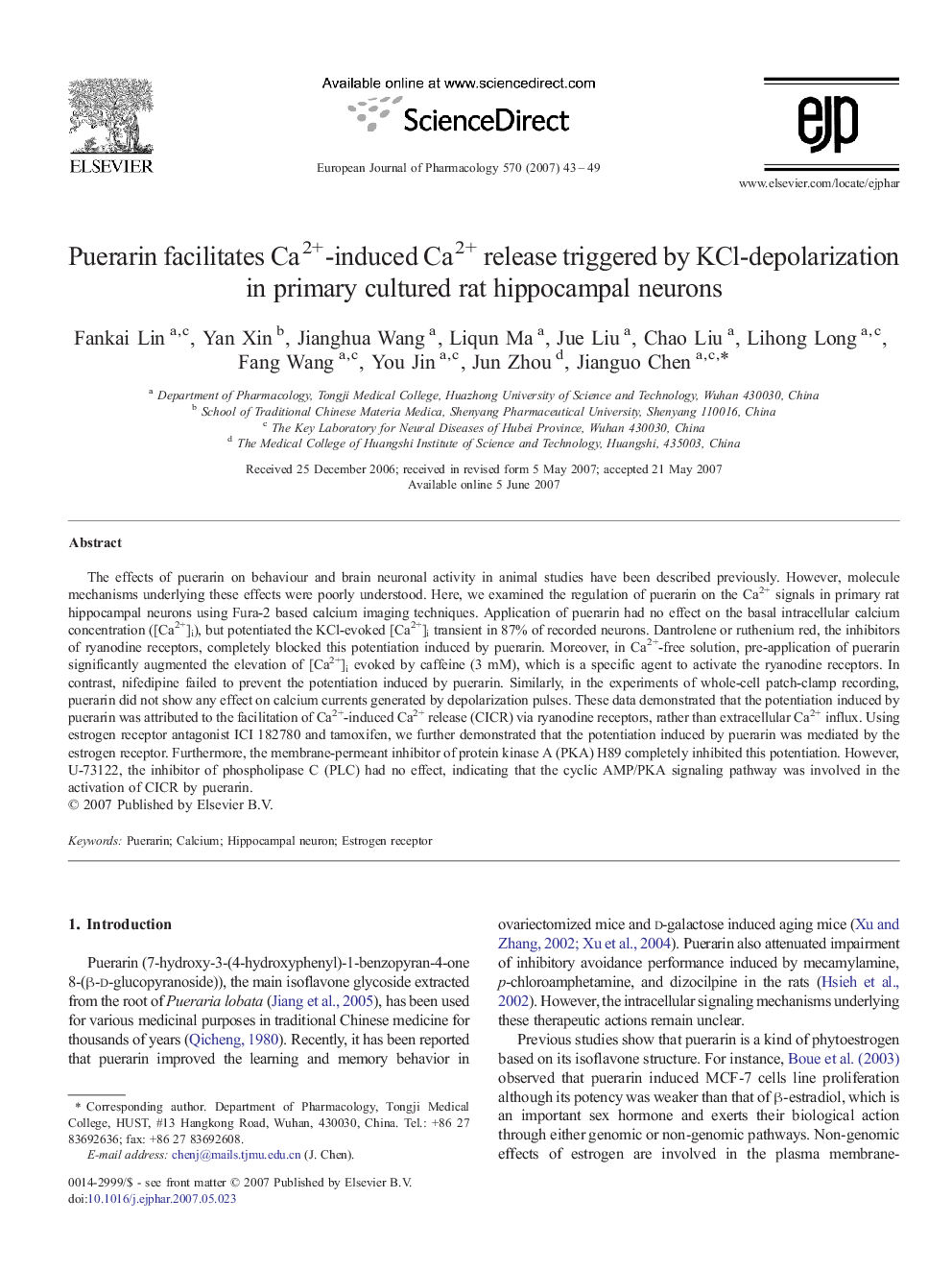| Article ID | Journal | Published Year | Pages | File Type |
|---|---|---|---|---|
| 2535929 | European Journal of Pharmacology | 2007 | 7 Pages |
The effects of puerarin on behaviour and brain neuronal activity in animal studies have been described previously. However, molecule mechanisms underlying these effects were poorly understood. Here, we examined the regulation of puerarin on the Ca2+ signals in primary rat hippocampal neurons using Fura-2 based calcium imaging techniques. Application of puerarin had no effect on the basal intracellular calcium concentration ([Ca2+]i), but potentiated the KCl-evoked [Ca2+]i transient in 87% of recorded neurons. Dantrolene or ruthenium red, the inhibitors of ryanodine receptors, completely blocked this potentiation induced by puerarin. Moreover, in Ca2+-free solution, pre-application of puerarin significantly augmented the elevation of [Ca2+]i evoked by caffeine (3 mM), which is a specific agent to activate the ryanodine receptors. In contrast, nifedipine failed to prevent the potentiation induced by puerarin. Similarly, in the experiments of whole-cell patch-clamp recording, puerarin did not show any effect on calcium currents generated by depolarization pulses. These data demonstrated that the potentiation induced by puerarin was attributed to the facilitation of Ca2+-induced Ca2+ release (CICR) via ryanodine receptors, rather than extracellular Ca2+ influx. Using estrogen receptor antagonist ICI 182780 and tamoxifen, we further demonstrated that the potentiation induced by puerarin was mediated by the estrogen receptor. Furthermore, the membrane-permeant inhibitor of protein kinase A (PKA) H89 completely inhibited this potentiation. However, U-73122, the inhibitor of phospholipase C (PLC) had no effect, indicating that the cyclic AMP/PKA signaling pathway was involved in the activation of CICR by puerarin.
